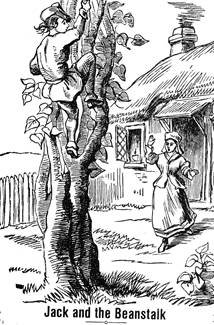Bad-time stories

‘Bad-time Stories’ article by Phillip Adams , (The Weekend Australian Magazine March 13-14, 2010)
“Remember the once-upon-a-time time? When children were scared by fairy stories about giants and beanstalks and old crones with gingerbread cottages? The macabre Punch and Judy have long since given way to cinema and television and “childhood innocence” is an oxymoron. Thanks to screens big and little, kids are bombarded with brutal images pretty much as soon as they leave the labour ward. And marketers are well on the way to sexualising children before they start kindergarten.
The fictional brutality of drama series and the factual horrors of news services combine to teach the very young things kept from my generation, even though we began our lives in World War II. Adults did their best to protect children from that nightmare, to protect childhood itself. And they kept their secrets.
Now secrecy is out of date. It’s open slather on sex and kids now know the world to be a deadly and unforgiving place. How old is a child before they’re familiar with, even blase about, the worst the world has to offer via wars and random violence? A youngster today knows as much of danger, depravity and disaster as my parents ever knew.
Any attempt by an adult to protect a child is foredoomed and efforts at censorship are futile. The internet has seen to that. Pornography dominates downloads while the far more problematic issue of the pornographies of violence has been out of control for decades. This porn, the porn of killing, explosions and sundry cruelty currently culminates in the escalating obscenities of video games. (“Games”? Now there’s a misnomer).
No point protesting it. Useless to rage about it. Fact of 21st century life. To even raise the issue is to be (to borrow a phrase as outdated as my concerns) a fuddy duddy. Well, this duddy daddy is fuddy – and fearful of the future. A combination of technological determinism and a collective shrug of the shoulders is leading to increasingly dulled sensibilities that require an endless notching up of stimulus. Just as addicts have to increase the dose.
Forget the rocking horse in the nursery. We’ve dragged a mob of Trojan horses into our homes, into our kids’ lives. And we see the results in the ever-widening acceptance of violence – not only on the screens and in the “games” but in the schools, in the pubs, on the roads and behind the curtains of suburban homes. Violence is no longer the last resort. It is becoming the first response, the unconstrained impulse.
Schoolyard massacres in the US are one symptom of the culture. Perhaps Australia’s recent schoolyard killing was another. But my main concern is not the isolated tragic event so much as the dulling of the sensibility, that normalising of violence.
Remember when the term “suicide bomber” was first heard? The idea seemed incomprehensible. Now we take it for granted that people will detonate explosives on their bodies in their determination to kill as many as possible. The same “normalising”, the same acceptance, applies to local brawls ignited by booze and bigotry. Remember Cronulla? The broadcasters helped incite those riots are still broadcasting.
“They lived happily ever after.” That’s how a fairy story resolved things. And the child would snuggle down in bed and go to sleep. There are few happy-ever-afters these days – and few fairies in the 21st century bedtime story.
Image from the Coles Funny Picture Book.
